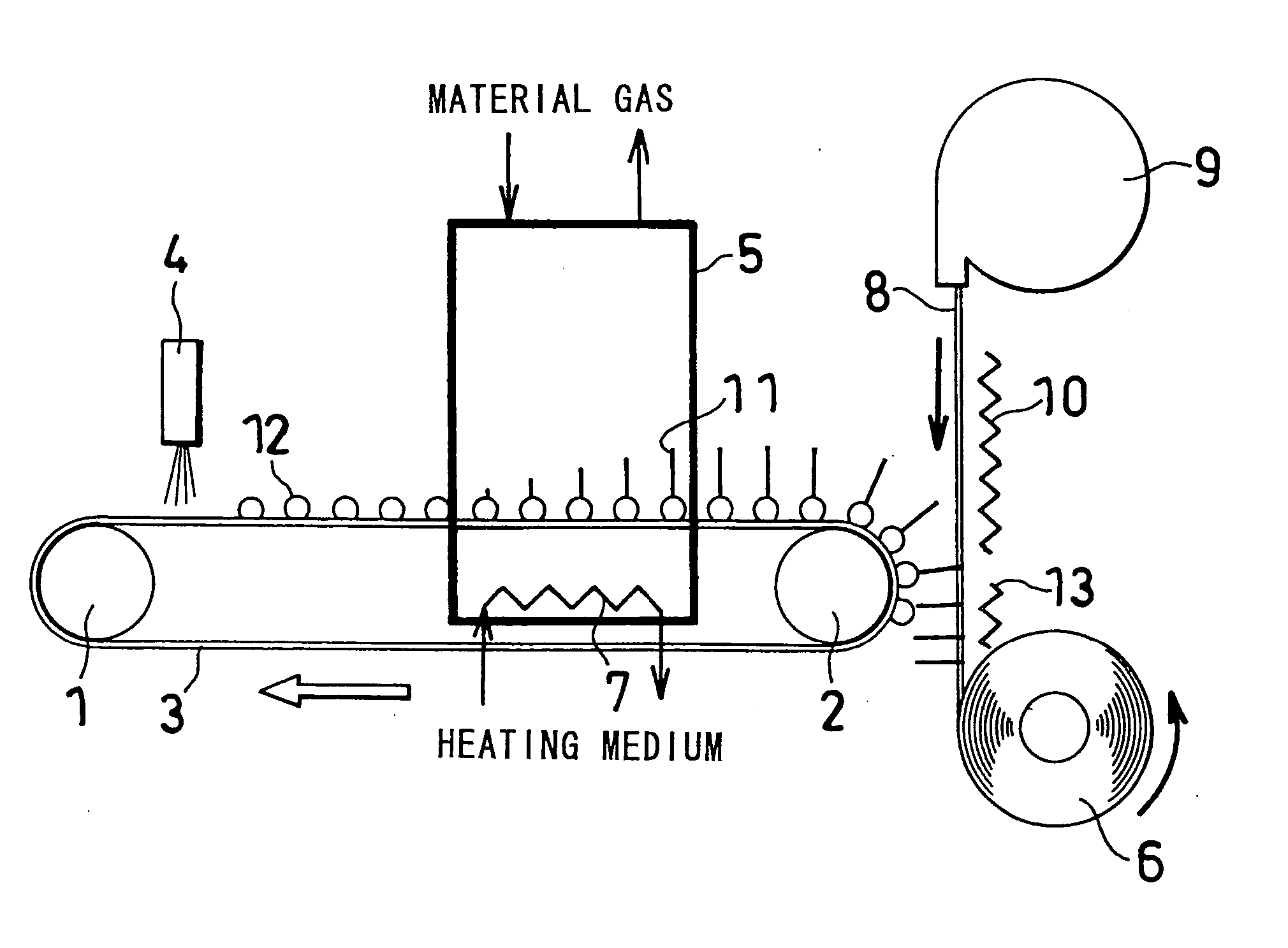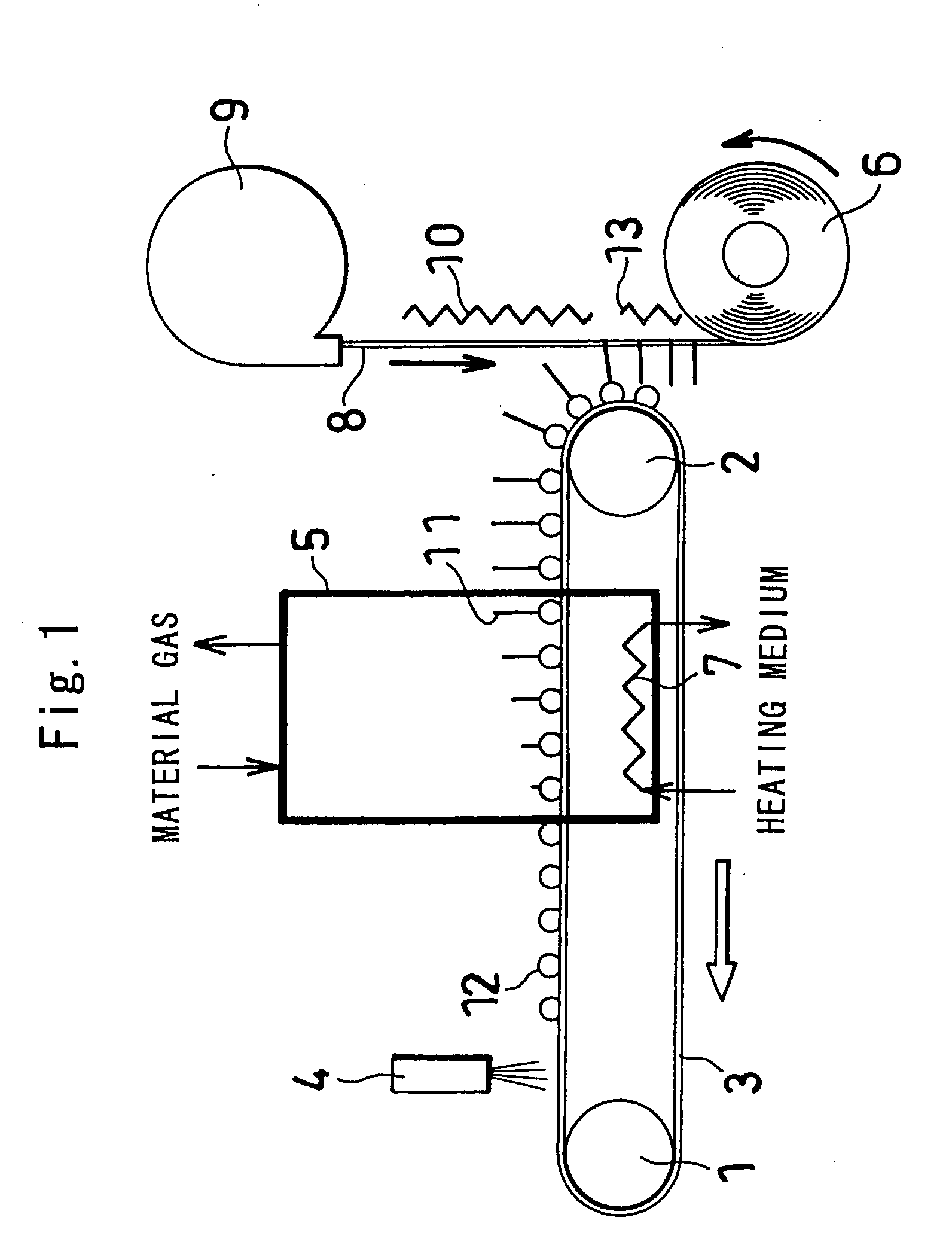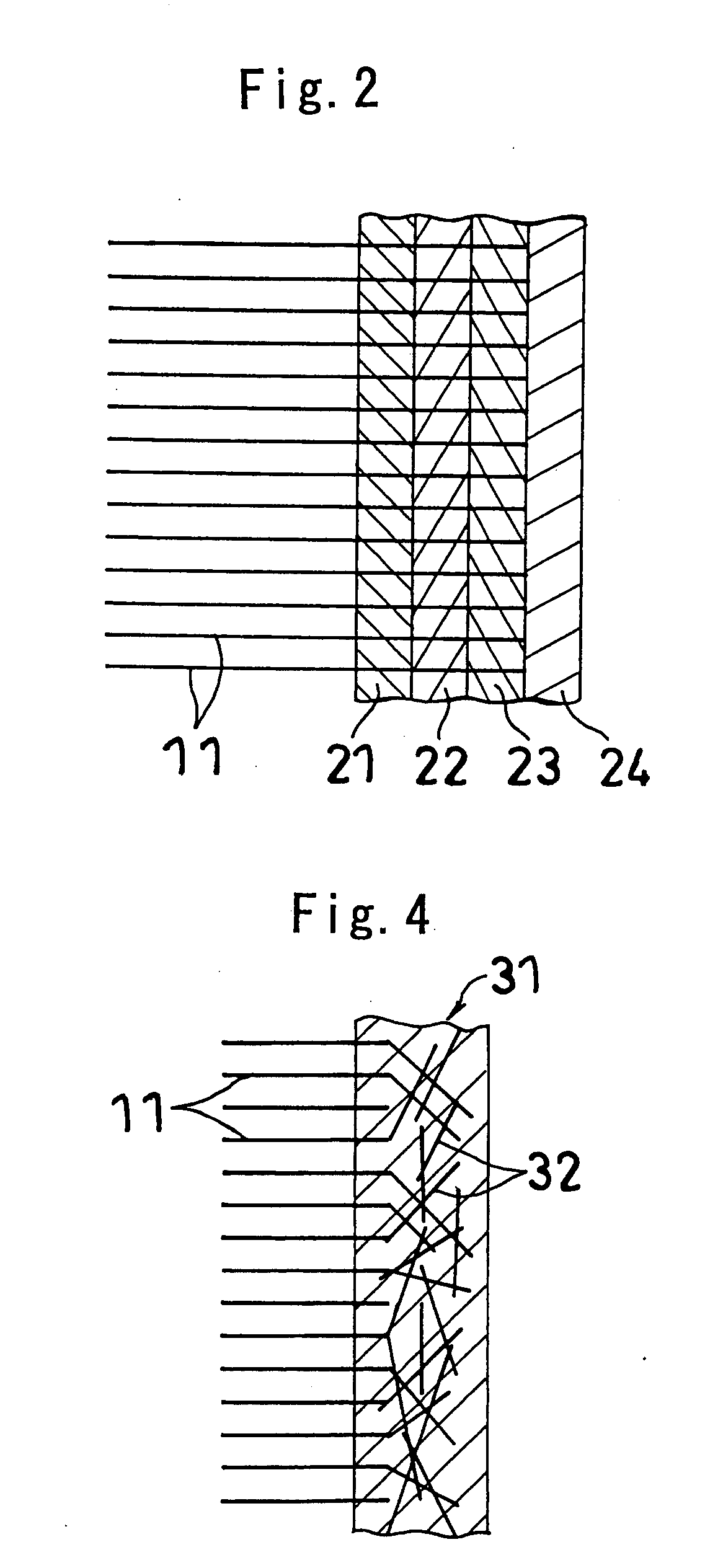Conductive material using carbon nano-tube, and manufacturing method thereof
a technology of carbon nanotubes and conductive materials, which is applied in the direction of carbon-silicon compound conductors, electrolytic capacitors, cell components, etc., can solve the problems of low electric conductivity of activated carbon of great specific surface area, failure to deliver great current, and the increase capacity achieved by this method is still limited to about 1.7 times the conventional level, and achieve excellent corrosion resistance to acids. excellent
- Summary
- Abstract
- Description
- Claims
- Application Information
AI Technical Summary
Benefits of technology
Problems solved by technology
Method used
Image
Examples
example 1
[First Step]
[0037] A solution of Fe complex was splayed onto a low-resistance N-type semiconductor silicon substrate, 0.5 mm in thickness, and the substrate was heated at 220° C. to form an iron coating.
[Second Step]
[0038] The iron coating on the substrate was placed into a CVD apparatus. Acetylene serving as a material for carbon nanotubes was introduced into the CVD apparatus at a flow rate of 30 ml / min at a temperature of about 720° C. for 15 minutes. When thus heated, the iron coating was made into particles, and bristle-like carbon nanotubes were produced and gradually grown, with the resulting catalyst particles serving as nuclei. The carbon nanotubes grown had a multilayer structure and were 12 nm in thickness and 50 μm in length.
[Third Step]
[0039] The bristle-like carbon nanotubes obtained were pressed at their outer ends against a conductive film (CF48, product of Toray Industries, Inc.) having a thickness of 0.2 mm and heated to a temperature not lower than the soften...
example 2
[0041] This example shows a process for producing a carbon nanotube electrode by performing the steps of Example 1 continuously.
[First Step]
[0042]FIG. 1 shows an endless belt 3 (comprising a low-resistance N-type silicon substrate having a thickness of 0.5 mm) which was driven at a feed speed of 12 m / h by a drive drum 1 and a driven drum 2. A solution of Fe complex was applied to the upper surface of the endless belt 3 by a spray 4 in a catalyst deposition zone at an upper-side upstream portion of the belt 3 and thereafter heated to 220° C., whereby catalyst particles 12 were formed as scattered at a spacing of 100 nm on the belt 3.
[Second Step]
[0043] The catalyst particles 12 on the endless belt 3 were transported to a CVD zone downstream from the catalyst deposition zone. The CVD zone comprised a heating furnace 5 having a length of about 2 m in the direction of movement of the belt, and a heater 7 disposed inside the furnace 5 under the belt 3. Acetylene gas serving as a mate...
example 3
[First Step]
[0046] The same procedure as in Example 1 was performed.
[Second Step]
[0047] The same procedure as in Example 1 was performed.
[Third Step]
[0048] The bristle-like carbon nanotubes 11 formed on the 0.5-mm-thick low-resistance N-type semiconductor silicon substrate by the second step were pressed at their outer ends against a conductive multilayer film heated at 95° C., whereby the carbon nanotubes were implanted in the conductive film substantially perpendicular to the film surface. With reference to FIG. 2, the conductive multilayer film comprises, as arranged from the transfer side toward the other side, an ITO (Indium Tin Oxide) layer 21 having a thickness of 0.01 to 0.03 μm, a primer layer 22 having a thickness of 0.05 to 0.5 μm, a polyethylene layer 23 having a thickness of 20 to 50 μm and a polyethylene terephthalate layer 24 having a thickness of 50 to 180 μm. The polyethylene layer may comprise other heat-resistant film.
[Fourth Step]
[0049] The conductive film...
PUM
| Property | Measurement | Unit |
|---|---|---|
| temperature | aaaaa | aaaaa |
| bore diameter | aaaaa | aaaaa |
| bore diameter | aaaaa | aaaaa |
Abstract
Description
Claims
Application Information
 Login to View More
Login to View More - R&D
- Intellectual Property
- Life Sciences
- Materials
- Tech Scout
- Unparalleled Data Quality
- Higher Quality Content
- 60% Fewer Hallucinations
Browse by: Latest US Patents, China's latest patents, Technical Efficacy Thesaurus, Application Domain, Technology Topic, Popular Technical Reports.
© 2025 PatSnap. All rights reserved.Legal|Privacy policy|Modern Slavery Act Transparency Statement|Sitemap|About US| Contact US: help@patsnap.com



